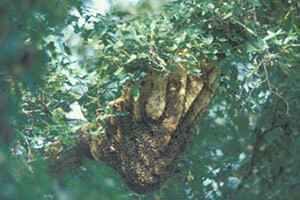
When it comes to the dance floor, my Cuban-born wife of Spanish descent belongs to a different league than her Hoosier-born husband raised on a hog farm. Need I bother to say, a better league? Whether it’s her genes or her culture or the rhythm of the Caribbean waves, she just simply gets it, while I find learning new dance steps about as intuitive as learning to speak Welsh. Even when I get the steps right, instructors respond with patient notes to their voice, saying things like, “Well, that’s not so bad.” And then there was the time I was on stage with a bunch of other guys performing the bottle dance in Fiddler on the Roof and . . . well, let’s just say it wasn’t pretty. But I can’t stop this indulgent autobiographia before testifying to the miracles of genetic recombination – the fact that my daughter is a dancer, and not just a dancer but an accomplished one who teaches 1940s-era swing dance once a week to a packed class of community adults and students here in Athens. Maybe I just don’t try hard enough.
Whether my case is true of all Hoosier-born farmers (maybe not) when it comes to honey bees, dancing is something that comes naturally to all of them. It’s true, every species of the genus Apis is known to perform recruitment dances of a kind similar to the waggle dance I talked about last month. The symbolic dance language of the honey bee is indeed a marvel of biology, and if you intend to finish reading this article, it might be a good idea to first re-read last month’s installment to renew your appreciation of the complexity of this behavior and its layers of components that communicate both distance of a resource and its direction relative to the nest. What forces of natural selection would favor the evolution of such a behavior?
To begin, we should remind ourselves that dance recruitment language is implicitly a social behavior; it could not, and would not, have evolved in pre-social species that do not live together in groups. It must therefore be understood as evolution acting upon the group, not the individual. This in turn mirrors another recurring theme in these columns, and that is the Superorganism concept that posits the colony, not the individual, as Darwin’s unit of selection.
Second, we should remember that evolution is unwaveringly practical. It’s all about optimizing probabilities of passing on one’s (or the superorganism’s) genes, and when it comes to complex behaviors, evolution operates on a kind of cost: benefit basis. It is not cost-neutral to engage in symbolic recruitment language. It takes time and energy for a scout to perform a dance, and it takes time for recruits to follow a dance and absorb its information. If the collective calories spent performing and interpreting dances do not exceed the collective calories gained from subsequent recruitment events, then evolution will not reward this behavior* and its genetic codes will not accumulate and become fixed in the population. It was Sherman and Visscher1 who first articulated this premise and experimentally showed that Apis mellifera colonies whose recruits were deprived of distance and direction information (by experimentally obscuring sun orientation cues) collected less food from feeding stations than those colonies whose recruits were not handicapped. But the benefits were not consistent. Even though distance and direction knowledge increased recruit visitation to feeder stations, about one-third as many recruits could find the stations without this knowledge. Presumably these “naïve finders” were responding to odor signals they had picked up from scouts at the hive and succeeded in finding the source in the field on their own.
Dornhaus and Chittka2 noted this ambiguity and reasoned that the benefits of dance language may depend on the kinds of environment in which the bees evolved. Noting that floral resources tend to be more patchy in the tropics and more evenly distributed in temperate zones, these authors reasoned that precise dances would be more important in tropical zones. After all, if flowers could be found everywhere then why bother evolving a means to communicate precise location? So they proceeded to do an elegant experiment comparing recruitment performance of Apis mellifera colonies deprived, or not deprived, of sun orientation cues† – and they replicated this experiment in three very different habitats: a Mediterranean shrubland habitat in Spain, a site of mixed agriculture and meadows in Germany, and a dry deciduous forest in India. True to their prediction, foraging success (weight change of hives) was only improved when precise orientation cues were made available at the tropical Indian site. Weight change in the two temperate sites, Spain and Germany, didn’t depend on whether scouts or recruits could accurately communicate sun-oriented navigation cues. The authors concluded that their results “are consistent with the hypothesis that the honey bee dance language is an adaptation to the tropical conditions under which the genus Apis diversified, and may no longer be essential for efficient foraging in some temperate habitats.”
This conclusion is sensible, but a recent line of fossil evidence argues for …


